Variegated Rhaphidophora tetrasperma are adorable but costly houseplants only in the hands of a few rare plant collectors. You can go for the aurea, albo, and mint variegata, just as it is with variegated Monsteras.
Learn more about these variegated plants, including how the variegations occur, will they revert, prices, where to buy them, and much more.
Warning: Rhaphidophora is toxic or poisonous to humans, dogs, cats, and other pets. Chewing it will cause severe oral irritation, burning feeling, swelling, drooling, swallowing difficulties, etc. Keep it out of the reach of your pets and kids.
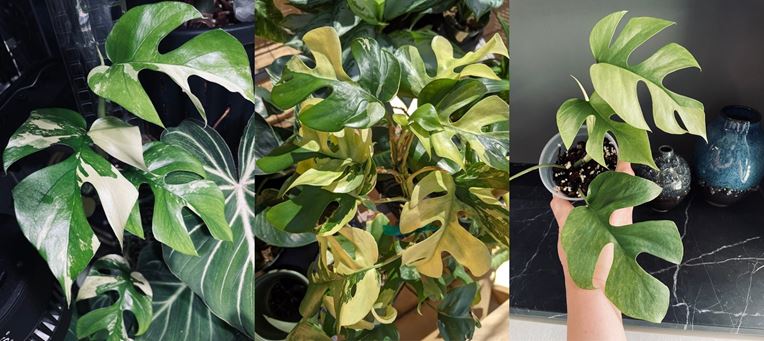
Contents
- Understanding variegated Rhaphidophora tetrasperma
- 1. Types of variegation
- 2. More on chimera
- Different types of variegated Rhaphidophora tetrasperma
- 1. Rhaphidophora tetrasperma albo variegated
- 2. Rhaphidophora tetrasperma aurea variegata
- 3. Rhaphidophora tetrasperma mint
- Will my plant revert and other concerns
- Rhaphidophora tetrasperma variegata
- Propagation
- Common problems
- 1. Diseases
- 2. Pests
- 3. Other variegated Rhaphidophora tetrasperma problems
Understanding variegated Rhaphidophora tetrasperma
A variegated plant has leaves with two or more different colorations, i.e., it could be green and white, yellow, mint, or any other color. It may appear as streaks, splashes, marbling, specks, sectors, or blotches, including half-moon.
1. Types of variegation
There are several types, including:
- Natural (genetic, pigmented, or pattern): It is stable, passes through sexual reproduction, and results from a genetic mutation.
- Chimeral: Due to meristemic (active site for cell division and growth) cell mutation. There are three kinds, periclinal, sectorial, or mericlinal.
- Reflective variegation: This happens due to air pockets between the outer and pigmented layers and makes leaves look shimmery.
- Pathogenic: Caused by viral infections that break color and persist as long as the disease is present.
- Transposon or jumping gene: Involves genetic elements randomly jumping among chromosomes.
- Chemical or artificial: It happens by feeding plants with chemicals that prevent or influence chlorophyll formation and may include plant painting.
Back to R. tetrasperma. What causes its variegation? The quick answer is chimeral variegation and, to be exact sectorial. But there are people who feel that it may be chemical and warn of the markings fading after some time.
2. More on chimera
To understand chimera variegation, you must learn a little bit more about meristemic tissue. Why? Because it occurs here.
The meristem tissue has three layers, the upper (L1) that form the epidermis, the second layer (L2) forms the subepidermal layer, and the third layer (L3), which forms the innermost layer.
L1 and L1 have a single cell layer, and cells here divide sideways, while L3 has several layers, and cell division is random.
Periclinal chimera involves a mutation that affects a single, entire layer, say L1 or L2. It’s stable and results in variegated margins.
On the other hand, Mericlinal is similar to periclinal but affects only a portion of a single layer. It’s unstable or transitional to periclinal chimera.
Lastly, sectorial chimera mutation involves a portion of the three layers. It is unstable, unpredictable, and may revert to green. It is what causes variegation in not just this Rhaphidophora but also Monstera and other houseplants.
Different types of variegated Rhaphidophora tetrasperma
Rhaphidophora tetrasperma, also known as Monstera minima, minima Monstera, mini Monstera, Philodendron minima, Philodendron Ginny or Philodendron Piccolo, is undoubtedly a charming houseplant.
The juvenile shingling leaves resembling Rhaphidophora korthalsii and the large non-shingling mature leaves with deep split (pinnae) and occasionally rhombic holes near the midrib make it stunning.
You will like the variegated forms even more. But we must warn you that they are expensive and hard to get. Only a handful of collectors have them.
Here are the different types we have seen in the market so far:
1. Rhaphidophora tetrasperma albo variegated
Rhaphidophora tetrasperma albo variegated has green leaves with cream to white marbling, streaks, blotches, and sectors. Some plants have half-moon leaves, and others are almost entirely white or cream.
The albo variegation occurs due to cell mutation that makes the white or cream sectors unable to produce chlorophyll.
If you are interested in it, you deserve to know that it is a rare plant with only a few people selling it on Etsy.com, eBay.com, Instagram, and Facebook.
The price of Rhaphidophora tetrasperma albo variegated ranges from $1500 for a stem cutting to $28000 for an established plant. Remember this is the plant that sold for NZD 27100, about USD 17,729 at Trade Me some time back. It had eight leaves and the 9th unfolding.
Lastly, we saw someone selling a cutting this Albo variegated plant for only $459 for a rooted plant with 1-2 leaves with a claim of consistently variegation on each leaf at hkvariegatedplantshop.com.
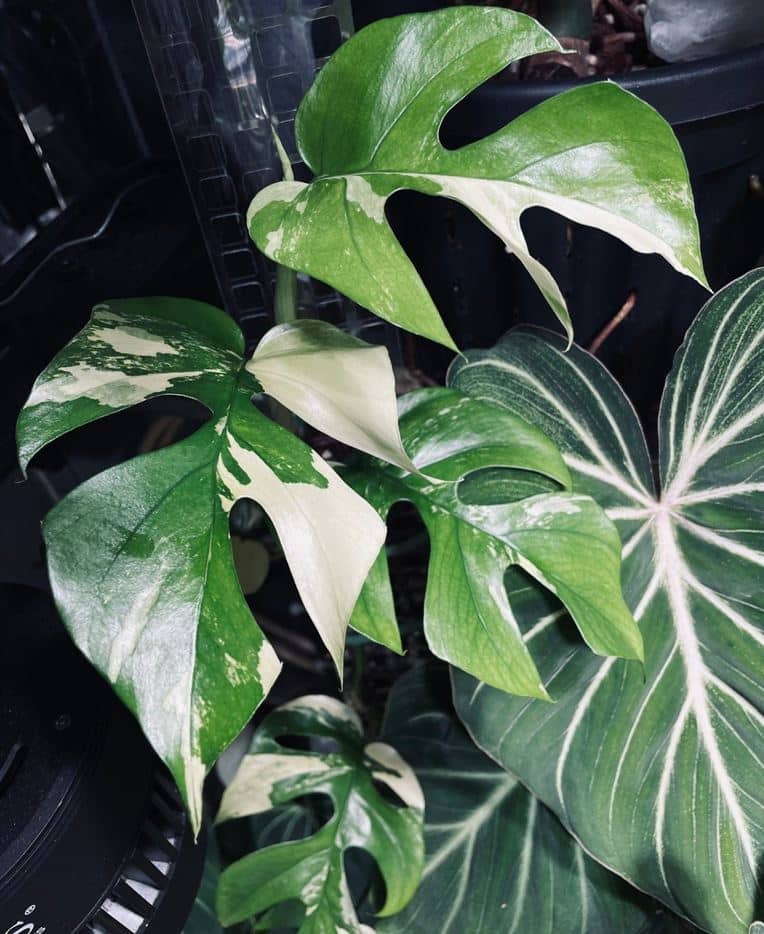
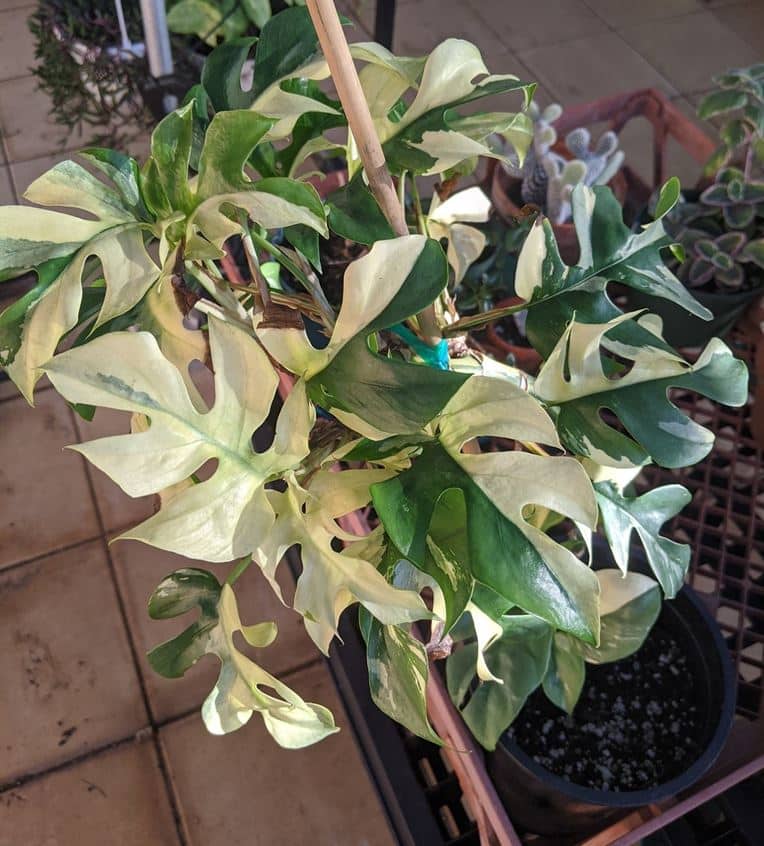
2. Rhaphidophora tetrasperma aurea variegata
The other type is Rhaphidophora tetrasperma aurea variegated which has yellowish variegation instead of white. It may have streaks, marbling, sectors, blotches, or even half-moon leaves.
The reason for the variegation includes defective chloroplasts characterized by less chlorophyll, high reactive oxygen species (ROS), and in some cases, accumulation of carotenoids.(1) Carotenoids may cause gold, orange or yellow coloration.
This aurea variegated R. tetrasperma is cheaper than albo but still costly. Prices range from $1500 to $9000 for a wet stick cutting and established plant, respectively. Way back in 2020, an anonymous buyer purchased the plant for USD 5,291, as Fox News reported.
Lastly, if you are looking for this Monstera minima aurea, start with Etsy.com, i.e., it has the most vendors, followed by eBay. The other places to check are Carousell.sg, Instagram and Facebook.
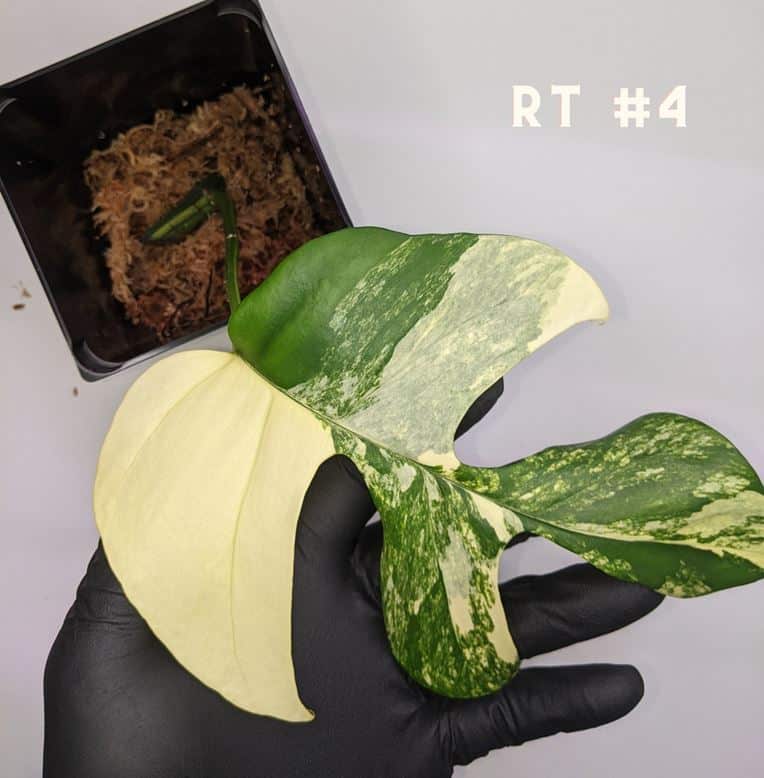
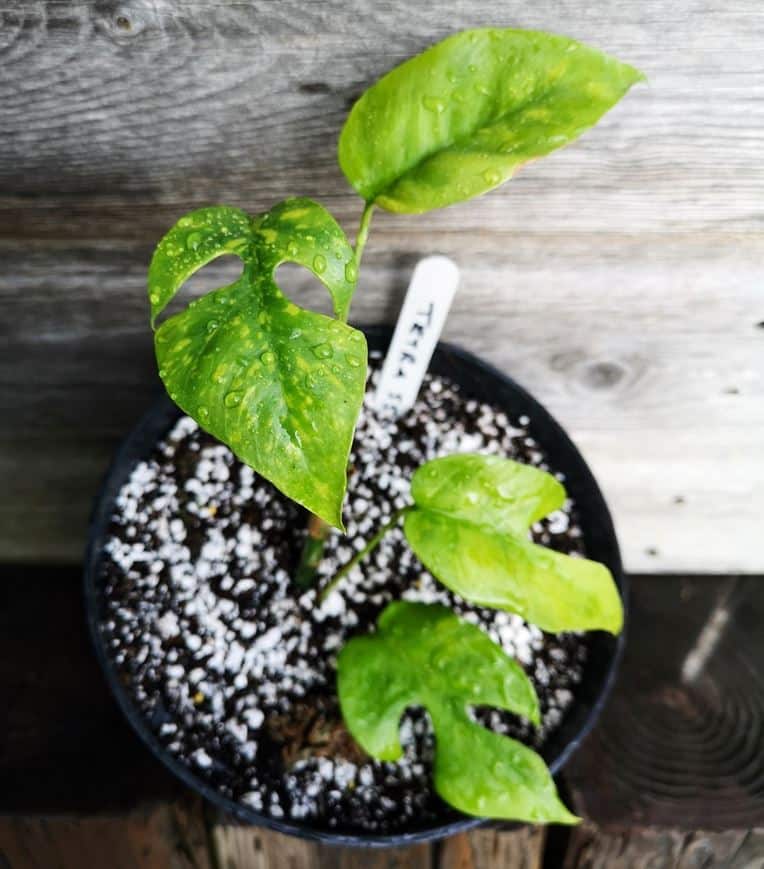
3. Rhaphidophora tetrasperma mint
Rhaphidophora tetrasperma mint variegated is a kind of green-on-green variegation, i.e.., the glossy green leaves have streaks, marbling, blotches, or sectors of mint green (lighter, vibrant shade of green) markings.
Like other variegated Rhaphidophora tetrasperma, it occurs due to sectorial chimera, i.e., a mutation on the meristemic cell results in this pigmentation.
How much does it cost? The average price of Rhaphidophora tetrasperma mint ranges from $1500 to $8500 at Etsy.com. There is one at eBay with a starting bid of $3500, and buy it now of $10000.

Will my plant revert and other concerns
Since it occurs due to a cell mutation that is unpredictable and unstable, the plant can revert to green or have entirely white, yellow, or mint leaves.
If it starts turning green or be entirely white, yellow, or mint, cut the affected branch just after the node has a variegated leaf. The new shoot that will grow is likely to have variegated leaves.
Reasons, why plants revert to green, are survival tactics (increase survival chances by making more food), another cell mutation, or adapting well to the environment or conditions.
That is not all. There is a concern that some people chemically induce their plants and that the variegations will wear with time. It can indeed happen. But we don’t think it’s the case with the Rhaphidophora tetrasperma variegata.
For the issue of the use of tissue culture to produce variegated Rhaphidophora tetrasperma, it shouldn’t worry you. Even the Monstera Thai constellation is from tissue culture and doesn’t revert.
Lastly, we must warn you that a tissue culture Rhaphidophora tetrasperma plant may look slightly different, but the markings won’t wear.
Rhaphidophora tetrasperma variegata
The care to give this plant is more or less what you would give the green form. But you need to strictly ensure bright, indirect light. Also, provide slightly higher humidity as the variegated parts are vulnerable to browning when under low humidity.
Here is the variegated Rhaphidophora tetrasperma care summary:
- USDA hardiness zone: 11 to 12. Not frost-hardy and freezing temperatures will damage or kill your plant.
- Humidity: ideal will be 50% or more. If low, mist your plant, buy a humidifier like LEVOIT Humidifiers Top Fill, 6 Liter, Cool Mist, or use a pebble tray.
- Temperature: 55-85°F (12-29°), with optimum being 70-80°F (21-27 °C).
- Light: Bright indirect light for at least 12 hours every day. Avoid direct sunlight. Use a grow light in poorly lit rooms.
- Best soil mix: Use a well-drained, airy potting mix rich in organic matter. A slightly acidic pH of 6.1 to 6.5 will work best. A coco coir or peat moss-based potting mix with added perlite, coco husks/bark chips, charcoal, and compost will work well or you can buy an aroid mix from Etsy.com
- Watering: Water when the soil’s top 1-2 inches feels dry. Don’t follow a schedule. Instead, feel the potting mix. When watering, slowly saturate the soil until excess water flows from drainage holes. Discard any that collects on a saucer after 15 minutes.
- Fertilizer: Feed with an all-purpose, balanced, liquid houseplant fertilizer at half recommended strength, about once a month during growing months. We use Miracle-Gro Indoor Plant Food (Liquid)
- Pruning: Routinely cut dead, diseased, or damaged leaves with sterilized gardening shears. You can cut a few stems to control size, growth, or shape.
- Repotting: Repot your plant yearly or when rootbound. Use a pot 2-3 inches wider than the current one.
- Staking: Since it’s a climbing plant, we recommend training your plant on a moss pole, totem trellis, etc.
Propagation
Propagation is by stem cutting, and you must take a node with a variegated leaf. Otherwise, you won’t have a variegated plant.
The best time to propagate your plant is in spring, but early summer will still give enough time for your plant to root. And you are free to use water or soil propagation.
Common problems
Issues you may have include pests, diseases, leaf discoloration (yellowing, browning, or turning black, including spots), leaves curling, and drooping/wilting.
1. Diseases
Diseases include bacterial or fungal leaf spots, blights or rusts, and root rot. The latter is more prevalent if you overwater your plants.
To avoid disease, maintain proper hygiene by sterilizing your gardening tools, washing your hands before handling your plants, and not overwatering your plant.
If you see any diseased plant, isolate it. If it has a water-soaked lesion, it’s likely a bacterial infection. Discard such a plant.
2. Pests
Pests are not so common indoors Rhaphidophora plants. But they can occur.
Bugs your plant may have include mealybugs, spider mites, thrips, scale insects, and whiteflies. These sap-sucking bugs will appear as tiny bumps, dots, spots that may move, and some fly.
Use insecticidal soaps, neem oil, or horticultural oils to manage them. We use Bonide Ready to Use Neem Oil to control pests.
The signs they cause will depend on the bug you have and include:
- Silvery stippling
- Black, yellow, brown, or whitish spots
- Honeydew and sooty mold
- Webbing
A heavy infestation will cause curly or distorted leaves that may turn yellowish.
3. Other variegated Rhaphidophora tetrasperma problems
Leaves turning yellow is a likely sign of overwatering, while brown leaves, edges, tips, or spots may indicate low humidity, underwatering, heat stress, or too much light (direct sun).
On the other hand, leaves turning black or having black spots or lesions will indicate disease or pests. If you see brown or black splotches, the issue may be overwatering.
If your variegated Rhaphidophora tetrasperma plant leaves are curling, it may be underwatering, low humidity, heat stress, or anything that results in your plant losing or not having enough moisture. These same things will result in leaves curling.
Last but not least, some things like repotting or relocating your plant may cause yellowing, browning, drooping, or curling of leaves. It is due to shock. Also, being rootbound may cause these issues.


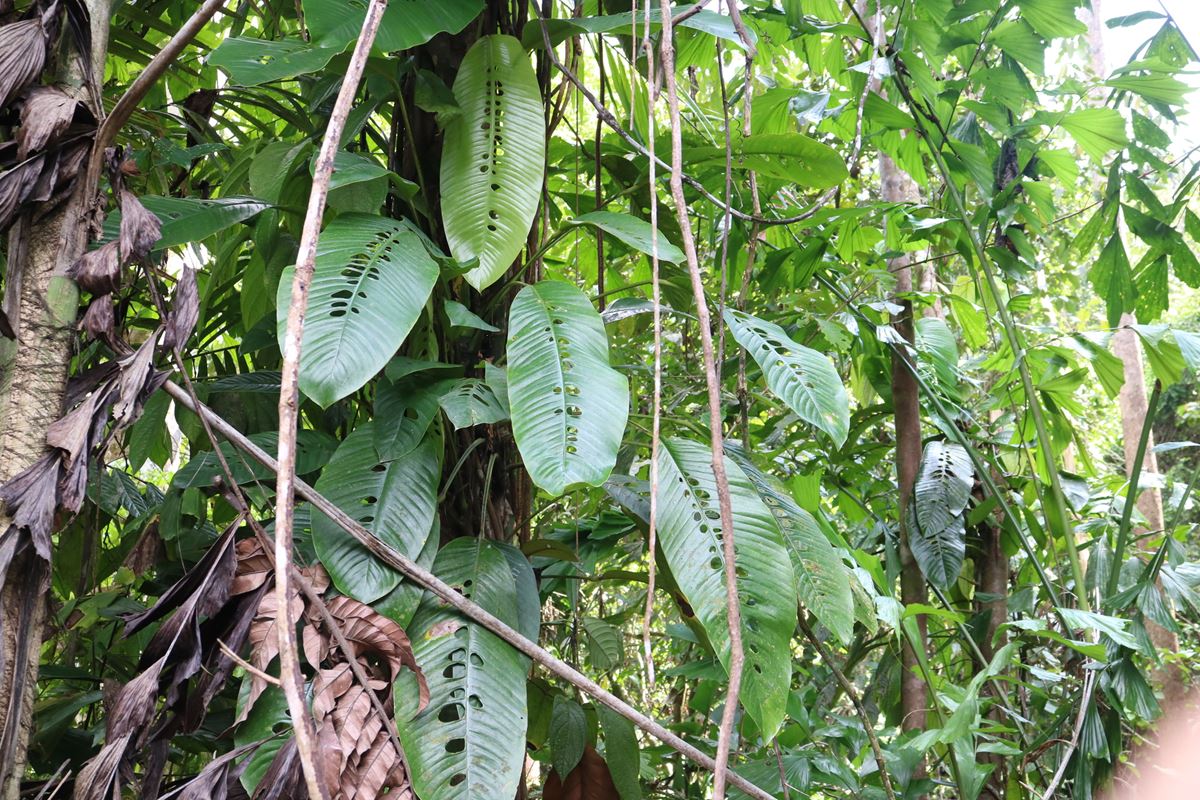

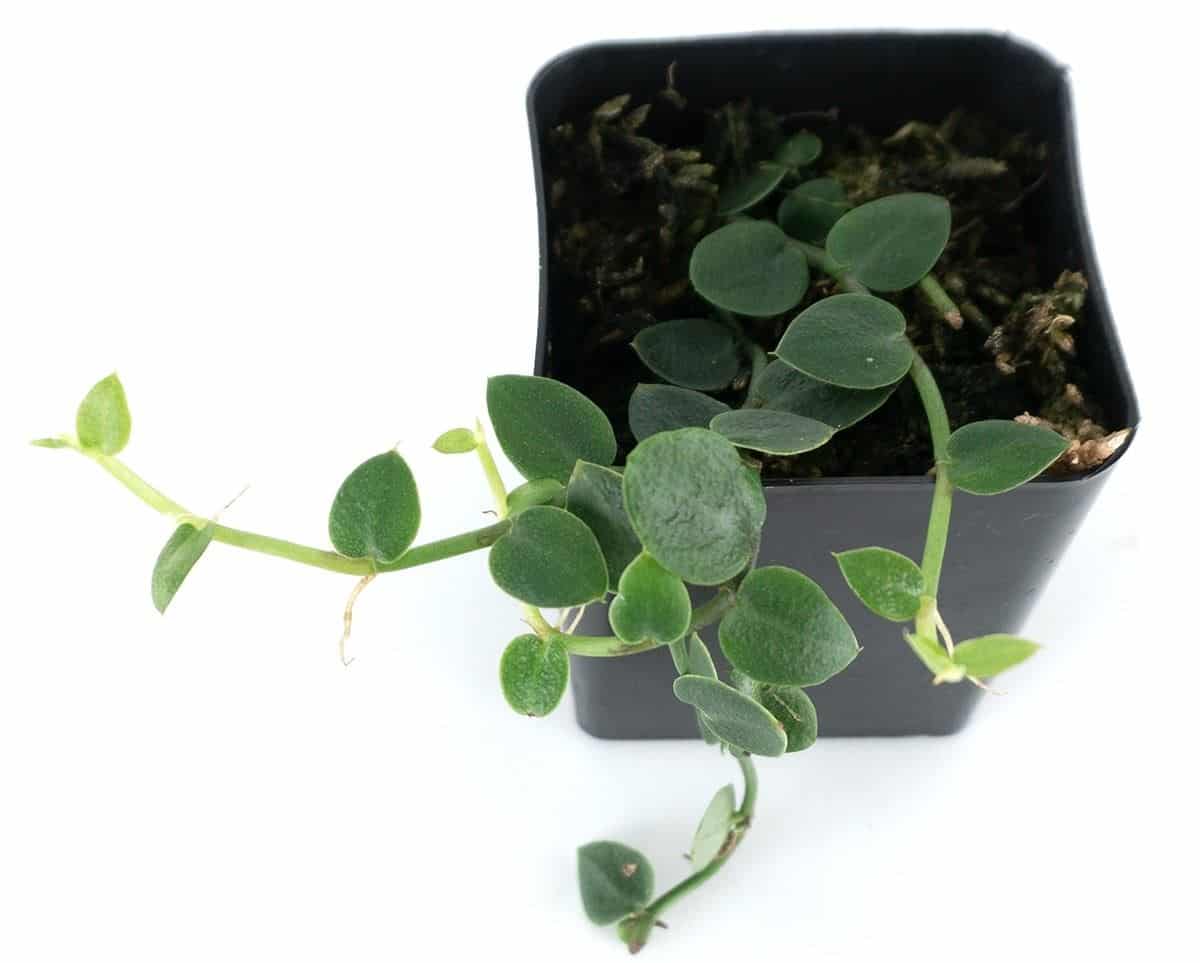
Leave a Reply